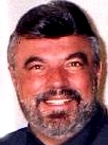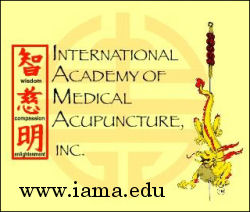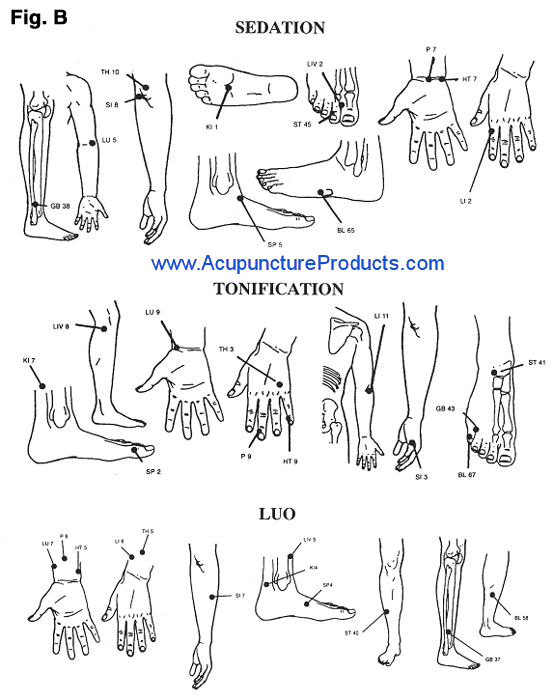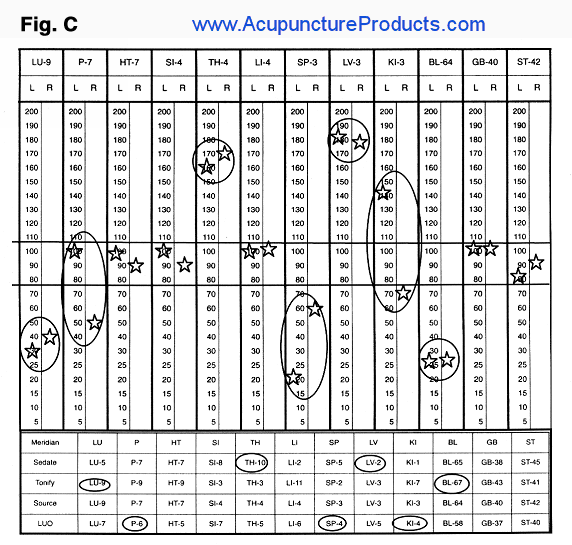Acupuncture & TCM Articles

Acupuncture Articles
by John A. Amaro L.Ac., Dipl.Ac.(NCCAOM), DC
 Dr. Amaro is an internationally known author, lecturer and practitioner beginning his practice of Acupuncture and Chiropractic in 1971. He has led 13 diplomatic Acupuncture study tours of The People's Republic of China escorting more than 500 doctors and practitioners. He has personally studied Acupuncture in nine separate Asian nations. Dr. Amaro is an internationally known author, lecturer and practitioner beginning his practice of Acupuncture and Chiropractic in 1971. He has led 13 diplomatic Acupuncture study tours of The People's Republic of China escorting more than 500 doctors and practitioners. He has personally studied Acupuncture in nine separate Asian nations.
He has received Certification in Acupuncture through the Columbia Institute of Chiropractic in 1973. This was one of the first Acupuncture postgraduate education programs for physicians in North America commencing in 1972.
He has been certified by the Waseda Acupuncture College in Tokyo, Japan in 1974 and graduated from the Chinese Medical Institute, Kowloon, China in 1976. He had previously taken postgraduate studies at the Tai Chung Medical School Taipei, China 1973.
"Contemporary Acupuncture Diagnosis - EMI"
John A. Amaro L.Ac., Dipl.Ac.(NCCAOM), DC
In 1951 Dr.Yoshio Nakatani M.D., Ph.D developed a method of examining the meridian system of the body thru electronic measurements which altered the way acupuncture would be practiced throughout Japan, Europe, Australia and North America. Referred to as "Ryodoraku" by Nakatani its use would become international within 25 years of discovery.
In approximately 1957 a medical delegation from the People's Republic of China visited Japan and became fascinated with Dr. Nakatani's discovery. The Chinese delegation visited Nakatani's clinic making detailed observations into the procedure and were amazed at both the theory and therapeutic effects. Following the delegations return to The People's Republic of China, the daily newspapers published several articles concerning Ryodoraku examination and treatment together with case reports of treatment. Requests were made of Dr. Nakatani to visit the PRC however due to political concerns, Nakatani declined all invitations. Ultimately reports of ryodoraku and electronic evaluation of the meridian system would stop coming from China. It is agreed by authorities that needle/electronic analgesia developed in China was spawned by Nakatani's original work.
Nakatani first developed the procedure of electronic evaluation of the meridian system by measuring skin conductance at the Yuan (Source) point of the wrist and ankle. By doing so he created one of the most significant acupuncture diagnostic methods that has yet to be created in either contemporary or traditional acupuncture. When one compares the findings of learned Asian Masters of acupuncture using pulse diagnosis, with the findings of Ryodoraku, the meridians which are shown to be involved are identical. Masters of acupuncture are known to palpate the 12 pulse positions for as long as 15-30 minutes per wrist in select cases. Electronic evaluation of the 12 Yuan points takes less than a total of two minutes regardless of the complications of the case.
Electronic measurement evaluation of the patients Yuan points do not determine the same indications that analyzing the specific 28 pulse characteristics seen in proper pulse diagnosis do. It does however, determine if an individual meridian is excess or deficient in comparison to the entire meridian system average of the 12 primary meridians.
When one finds an elevated or deficient meridian on Ryodoraku, the treatment approach is to specifically tonifiy or sedate the acupuncture points known to replenish or deplete biomagnetic energy. By doing so this action will create balance in the meridians. Electronic measurements are ascertained by examining the bilateral 24 specific Yuan points of the wrist and ankles for only three seconds per point.

Ryodoraku is practiced by measuring the Source point with an inexpensive instrument designed specifically for this purpose. By adding the measured values of each of the 12 meridian exam points together, dividing by 24 (representing the 12 bilateral meridians) the practitioner may develop a base average, the status of the meridians may be determined by being too high or too low in relation to the base average. In the mid 1980's, the art of electronic evaluation for diagnostic purposes in acupuncture entered into high technology by incorporating computer enhanced evaluation.

One of the most significant discoveries of Ryodoraku was the discovery of split meridians which had never before been seen or described in the history of acupuncture until the discovery of Ryodoraku. For example, in pulse diagnosis, the pulse of the Spleen, Lung and San Jiao meridian are always found in the right wrist, whereas the Gallbladder, Kidney and Liver are always analyzed in the left wrist. When one derives a diagnosis from the 28 pulse qualities, it can reveal a multitude of factors which can only be ascertained thru the pulse, however it cannot and does not reveal what the Ryodoraku has discovered.
Because Ryodoraku evaluation utilizes measurements of the Yuan points bilaterally, it often reveals especially in severe cases, the meridians exhibiting a split in numerical value between left and right sides of the body. As Ryodoraku measures the Yuan points of both sides of the body, it is able to detect a diagnostic situation that was virtually unknown until the invention of the Ryodoraku. By utilizing the LUO point of the split meridian, a correction can be made in a split (left to right) meridian. LUO points classically and traditionally are used to link a coupled meridian, such as Lung / Large Intestine. In Auriculotherapy, this correction between splits can be treated by the Master Oscillation Point.
Evaluation of the Musculo-Tendino meridians seen in Orthopedic conditions are ascertained by the same procedure but using the Tsing (Jing-Well) points. Yuan point and Tsing point evaluation are two entirely different examinations of two different meridian systems.
The system of Ryodoraku was re-named "Electro Meridian Imaging" (EMI) by
Dr. John A. Amaro in 1982. It gave the procedure a more contemporary descriptive term for todays patient. This electronic method of evaluation is reliable, duplicable, easy to learn and employ, as well as being extremely simple to explain to the patient. It is literally changing the way acupuncture is being used both diagnostically and therapeutically internationally.
With EMI being available to acupuncturists and physicians through computer enhanced imaging, it has become state of the art to allow a trained technician or practitioner themselves to conduct this significant diagnosis in less than two minutes. The computer hardware requirement is of an easy to use simple design that currently requires a computer running a minimum of 486K with a Windows operation system. It is attractive, professional and impressive to both the doctor and patient. Referrals for this electronic acupuncture examination are numerous to overwhelming. The typical Western minded patient exhibits much more confidence in this contemporary electronic computer enhanced style of examination than ancient pulse diagnosis. It allows the patient to take home a printed copy of their graphic interpretation as well as diagnostic criteria. In addition, a copy of involved meridians may be printed or specific points the patient may use at home to accelerate clinical response.
Space limits the full explanation of this procedure. Should any reader of this column wish an "Electro Meridian (EMI) descriptive booklet which shows the examination procedure in detail along with the computer screens from the software, simply send your request to DrAmaro@IAMA.edu You may also send your request directly to www.acupuncturetoday.com see "Columnist" go to Dr.Amaro at Contemporary Asian Healing go to "Talk Back" and log your request.
| 